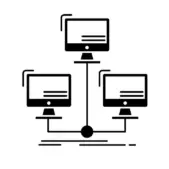When people think of user experience design, it’s often in the context of eCommerce, B2C websites, or mobile apps. It’s about making interfaces more intuitive and appealing. However, some of my favorite projects have involved creating user-driven internal BI solutions.
Business intelligence (BI) transforms raw data into actionable insights to guide strategies, decisions, and operational changes. The next step is developing dashboards and other solutions to deliver those insights to the people who need to act. User experience plays a crucial role here—these solutions must be designed with the end-user in mind.
In this article, I explore the top five strategies I’ve learned to ensure that BI solutions are effective and user-friendly. By implementing these tips, you can leverage data to drive better business outcomes and empower employees to make informed decisions.

How to Deliver Maximum Impact with Your BI Solutions
1. Prioritize making your solution intuitive and user-friendly.
While it may seem obvious, many data visualization tools and dashboards can be surprisingly user-unfriendly. Our users rely on these tools to gain valuable insights from the data, and we must ensure we deliver on this expectation. As Kate Crawford of Microsoft wrote, “We give numbers their voice.”
2. Ensure that your BI solutions enable users to take concrete and useful actions.
While the vast amount of available data may tempt you to provide it to your users, this approach often falls short. Instead, focus on understanding your users’ specific needs. Display the relevant data in a way that allows them to take meaningful actions. Avoid including extraneous information, even if it’s interesting or surprising, unless your users can actually do something with it.
The key is to curate the BI carefully, tailoring it to your users’ requirements and empowering them to leverage the data effectively. Resist the urge to dump data and let your users figure it out independently. Provide them with the right information, presented in a clear and actionable manner.
3. Match the data to your target audience.
When creating BI solutions, it’s crucial to understand your target audience clearly. Consider the following:
- Job Description and Role: Who are you creating the BI for? Is it for the CFO, the marketing team, or a different department? Tailoring the content to your audience’s specific roles and responsibilities is essential.
- Background Knowledge/Expertise: How familiar is your audience with the BI you’re providing? Ensure the information is appropriate for their expertise level, avoiding oversimplification or overwhelming complexity.
By identifying your target audience’s characteristics, you can create dashboards and BI solutions that are more relevant, impactful, and better suited to their needs. Overlooking this critical step can make the BI ineffective or even counterproductive for the intended users.
4. Align dashboard data to user goals.
When building a dashboard, you’ll likely have more data than can be displayed. This forces you to prioritize your end users’ most important data points. Consider what hierarchy makes the most sense for them. If valuable information doesn’t fit on the dashboard, you can make it available to users through other means.
5. Be mindful of color choices.
The colors red, yellow, and green on dashboards are commonly associated with a “stoplight” metaphor: Red typically signifies negative or problematic information. Yellow indicates neutral or intermediate results. Green denotes positive, successful, or favorable data.
If your company’s brand colors happen to include any of these stoplight colors, keep in mind that they may carry additional connotations in the dashboard context. This is an important consideration when selecting the visual elements for your dashboard.
BI solutions can be vital to your business’s success, from driving business insights to answering key questions. Ultimately, the goal is to streamline access to insights, simplify complex data, and provide an intuitive, engaging user experience. By focusing on the end-user, you can ensure your BI investments translate into meaningful change and tangible results for the organization. Let’s connect.


